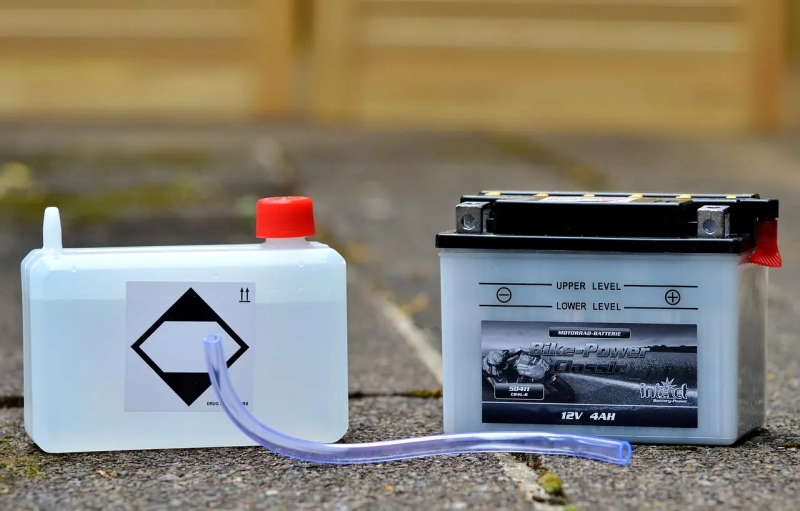
What is a battery?

Hello and welcome! In this article, we will tell you about batteries, the power source of the automotive world. From cars to motorcycles and many other vehicles, batteries are of great importance and function. Batteries are used to meet the electrical needs of vehicles and provide the energy needed for the engine to run. So, what is a battery and how does it work? In this article you will find answers to all these questions.
What is a Battery?
A battery is a device that stores electrical energy as chemical energy and gives this energy back as electricity. In automobiles, the main task of batteries is to start the starter motor, feed the lighting system and meet the energy needs of electrical devices inside the vehicle.
Working Principle of Batteries
Batteries work by the reaction of a chemical substance called electrolyte between positive and negative electrodes. These electrodes are usually made of lead and lead dioxide plates. The electrolyte is a mixture of sulfuric acid and water. Electrical energy is generated as a result of the reaction between the electrodes.
Battery Types
Batteries come in different types and vary according to their intended use. Here are some common types of batteries:
Dry Batteries
Dry batteries contain the electrolyte not in gel or liquid form, but impregnated with a substance that is usually found between impregnated glass fiber or glass fiber plates. Dry batteries do not leak and usually have a closed structure.
Wet Batteries
Aqueous batteries operate with a liquid electrolyte whose electrolyte is a mixture of sulfuric acid and water. This type of battery is commonly used in applications with high current requirements, such as starter motors.
Gel Batteries
Gel batteries come with the electrolyte impregnated with a gel-like substance. This gel prevents the electrolyte from leaking. Gel batteries are a suitable option for use in vibrating environments and in different locations.
AGM Batteries
AGM (Absorbed Glass Mat) batteries contain the electrolyte impregnated between glass fiber plates. This glass fiber mat absorbs the electrolyte and prevents leakage. AGM batteries are widely used in applications requiring low current discharge.
Battery Performance and Life
Battery performance and life will vary depending on usage, correct charging methods, maintenance regimen and environmental factors. Batteries that are not regularly maintained and properly charged can have a shorter life and reduced performance. It is important to choose the right battery and perform regular maintenance to extend their life.
Battery Maintenance and Charging
Regular maintenance and charging should be carried out to prolong the life of the batteries. Battery maintenance includes cleaning the terminals, checking the fluid level and adding water if necessary. Charging should be done using a suitable charger and overcharging should be avoided.
Battery Selection and Buying Guide
Choosing the right battery requires selecting a model that suits the needs and characteristics of your vehicle. The battery capacity must meet the current required by the starter motor and provide enough power for other electrical devices. It is also important to consider factors such as brand quality, warranty period and customer reviews when making a purchase.
Environmental Impact of Batteries
Improper disposal and recycling of batteries can cause environmental problems. Substances used in batteries, such as lead and acid, can harm the environment. It is therefore important to deliver batteries to recycling centers.
Renewable Energy and Batteries
Renewable energy sources generate energy from natural sources such as the sun and wind. Batteries are used to store this energy and make it available. The energy produced by solar panels
or wind turbines can be stored in batteries and used at night or during periods of low production.
Battery Frequently Asked Questions
Question 1: How often should the battery be replaced?
Battery replacement should generally be performed between 3-5 years. However, this period may vary depending on the conditions of use, maintenance and battery quality.
Question 2: How is the capacity of batteries determined?
The capacity of batteries is expressed in ampere hours (Ah). This value indicates how long the battery can supply a certain current.
Question 3: How to use a battery charger?
It is important to read the manufacturer's instructions carefully before using the battery charger. It is usually necessary to connect the positive and negative terminals correctly and select the
correct charging mode.
Question 4: How to detect a battery fault in a vehicle?
Battery failure in a car is usually manifested by symptoms such as the starter motor running with difficulty, low light intensity or slow operation of electrical appliances. It is important to contact an auto service center to have the battery checked.
Question 5: What to look for when choosing a battery?
When choosing a battery, it is important to pay attention to a capacity suitable for the needs of your vehicle, appropriate size and brand quality. In addition, brands that offer a long warranty period and have high customer satisfaction can be preferred.
Conclusion
In this article, we discussed the importance and functioning of batteries in the automotive world. Batteries are an indispensable power source to meet the energy needs of vehicles and keep engines running. Detailed information on the types, working principles, performance, maintenance and selection of batteries is presented. Remember, proper battery selection and regular maintenance are important to increase the life and performance of batteries.
 Türkçe
Türkçe English
English Russian
Russian
 Web Tasarım Tarafından Hazırlanmıştır.
Web Tasarım Tarafından Hazırlanmıştır.